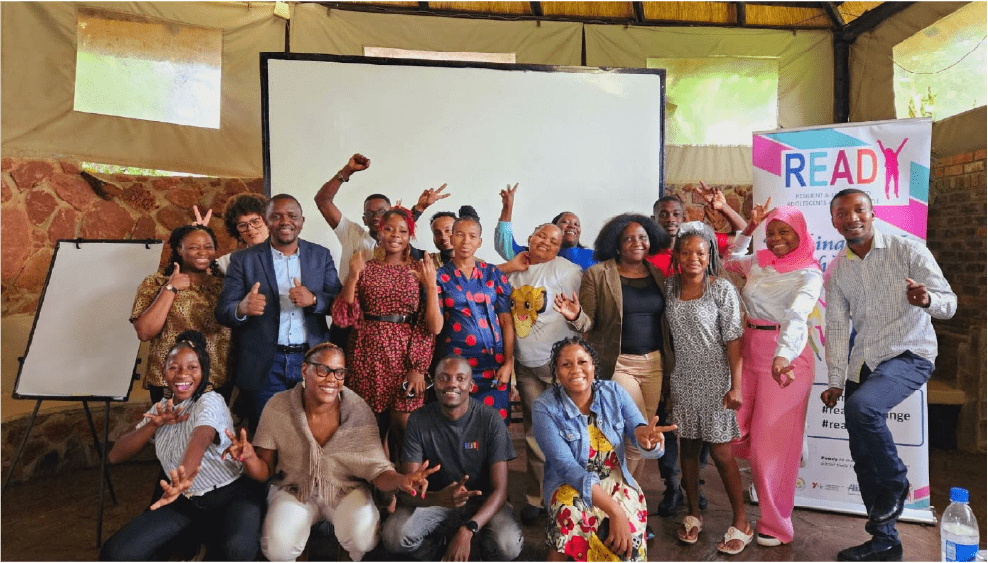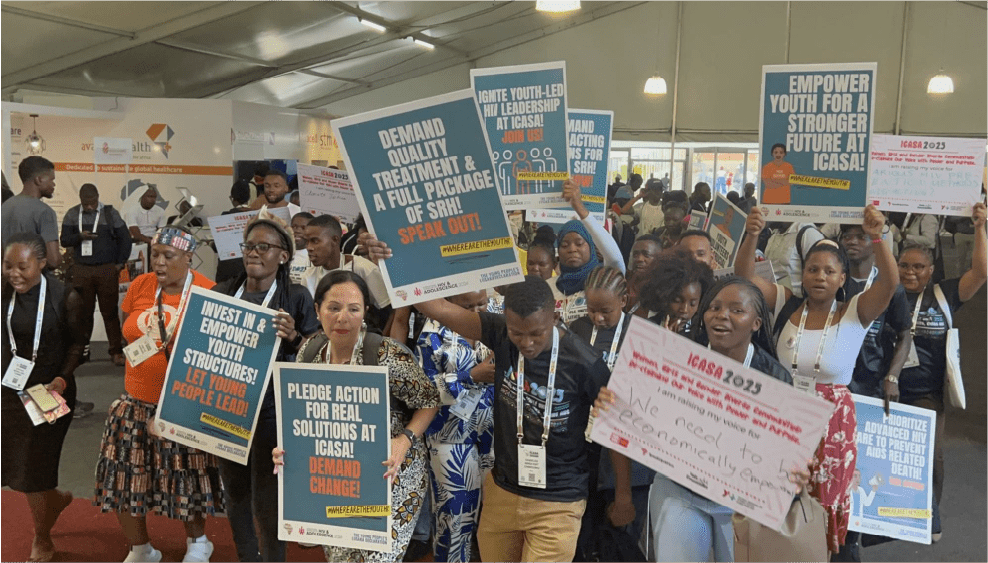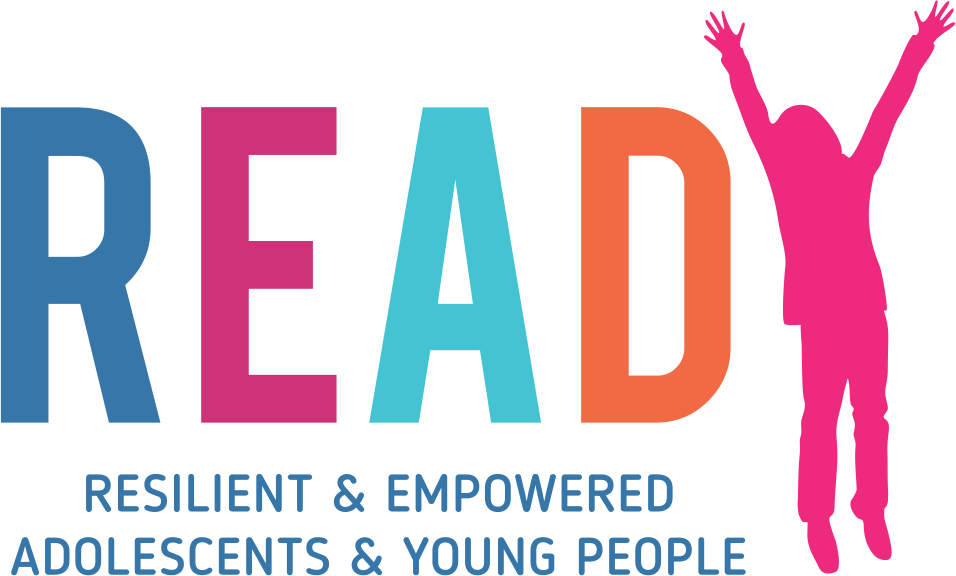
[Photo taken from the READY Academy 2.0 in Estwatini, 2024]
“There will be no antiretrovirals (ARVs), and that has affected our adherence.” Shared by a young person living with HIV in Zimbabwe, this sentiment resonates with many others as fears grow from the abrupt withdrawal of foreign funding, which has crippled clinics and hospitals, leaving life-saving HIV and sexual and reproductive health (SRHR) programs teetering on the brink of collapse.
UNAIDS has issued stark warnings about the potential consequences of these funding reductions. Without restored funding, the organisation projects an additional 6.3 million AIDS-related deaths and 8.7 million new infections in the next four years1. These numbers represent a potential resurgence of the AIDS pandemic, reversing decades of progress. The funding cuts have affected countries differently based on their existing healthcare infrastructure and reliance on external funding.
“UNAIDS has been working with governments on sustainability roadmaps for their national AIDS responses. African countries are trying to become more self-sufficient, some of the poorest trying to stretch fragile health systems to absorb people living with HIV.”
Winnie Byanyima – Executive Director of UNAIDS
This trend raises serious concerns about the long-term sustainability of the global HIV response. Since 2010, new HIV infections among children have dropped by 52%, and adolescent infections have fallen by 35%. These gains are the result of significant investments in treatment access, prevention programming, and community-based service delivery.
Young people have played a central role in driving this progress—from peer-led education to frontline service provision and grassroots advocacy. However, the momentum is now at risk of being reversed. Supported by government programmes like PEPFAR, USAID, and other bilateral and multilateral funders, it has been central to global progress, collectively saving an estimated 26 million lives since 2003.
In February, Zimbabwe Young Positives organised a focus group discussion for young people living with HIV, providing a secure environment for them to freely express the critical issues they encounter, especially regarding the USAID Stop Work Order. One participant from Masvingo expressed significant worry about interrupted access to healthcare.
Many young people in the meeting expressed that the policy changes significantly impacted their mental health, with many experiencing anxiety, uncertainty, and feelings of being overwhelmed. The abrupt disruption in services made them feel neglected, and the stress stemming from the uncertainty of accessing essential care intensified their emotional strain.
“We are standing at a dangerous crossroads. If the global community turns its back on young people now, we risk reversing decades of hard-fought progress in the HIV response. This is not just about funding—this is about lives, futures, and the promises we made.”
Maximina Jokonya – Executive Director at Y+ Global
UNAIDS reported that in countries like Malawi (88.5%), Zimbabwe (82.7%), and Mozambique (81.8%), HIV prevention programs are almost entirely dependent on U.S. support. In others—including South Africa, Botswana, Kenya, and Namibia—PEPFAR funding still makes up a significant portion, even if under 25%. With other donor nations now scaling back aid, these countries face an alarming funding gap2.


[From left to right: Group photo of participants from the recent RFP Meeting in Zimbabwe: Peaceful protest from activists and advocates at ICASA 2023]
READY+ Are Finding Ways to Adapt and Navigate
Since 2016, the READY+ project—led by Y+ Global with support from Frontline AIDS and other partners—has reached more than 40,000 adolescents and young people living with HIV across Angola, Eswatini, Mozambique, Malawi, Zambia, and Zimbabwe. The project has become a vital lifeline, delivering youth-led, community-rooted support in settings where the HIV response is often strained and underfunded.
But today, READY+ finds itself at a critical crossroads.
In Malawi, confusion and fear following a stop order on key HIV services have made it harder for young people to seek care and trust the system. Many are uncertain where to turn—or whether the support they once depended on is still available. This climate of instability has also slowed down vital advocacy efforts as young people and their allies work to navigate a constantly shifting landscape. Yet amidst these challenges, tools like the READY to Care Scorecard are proving invaluable. By documenting the realities on the ground, communities are finding new ways to organise, collaborate, and push for solutions in real time—solutions that are youth-led and driven by lived experience.
In Mozambique, the story is just as urgent. The closure of community- and peer-led services has left a deep void. These spaces were more than just treatment centres—they were places of safety, connection, and empowerment. For many young people, especially those already navigating stigma and discrimination, the absence of these trusted spaces is not just a logistical gap. It’s a deeply personal loss. The silence surrounding their needs sends a painful message: they are being overlooked at a time when they need support the most.
This is why READY+ is working alongside youth-led networks and key partners to call on governments to not only adopt the READY+ model but to own it. This is not just about continuing a program. It’s about safeguarding the services and spaces young people rely on and ensuring that their voices, needs, and leadership remain at the centre of the HIV response. It’s about building resilient, inclusive futures led by the very communities it serves—even in the face of uncertainty.
We cannot afford to lose the progress we’ve made.
As external funding becomes increasingly unpredictable, the stakes couldn’t be higher. A failure to act now could lead to a resurgence of HIV transmission among young people, increased AIDS-related deaths, the collapse of community-led efforts, and even greater strain on already fragile healthcare systems.
This moment calls for bold leadership and urgent action. The global community must increase contributions from donor nations, strengthen domestic funding mechanisms, improve existing programs’ efficiency, and support community-led responses that address structural barriers to care.
“As funding shrinks and support for youth programs becomes uncertain, we must remember their importance. Programs like READY+ provide essential services, fostering resilience and empowering youth to enact change. They help young people realise their full potential. Withdrawing support reverses our gains and hinders future progress across various development goals.”
Modester Mangilani – Senior Programmes Officer for READY+ at Y+ Global
Restoring funding and backing initiatives like READY+ is not just an option but a necessity. If we are serious about ending AIDS as a public health threat by 2030, no young person can be left behind.
As donor fatigue and economic pressures mount, global leaders must choose to recommit to their promises or risk undoing decades of progress. The world is watching, and millions of young lives hang in the balance.
About READY+
READY+ centres young people in the HIV response, ensuring they are not only recipients of services but also leaders in their health and rights. The project provides treatment literacy to help young people manage HIV and their sexual and reproductive health. It strengthens youth leadership by equipping them to advocate for their needs at every level—from community to global forums.READY+ further delivers technical assistance to youth-led networks, bolstering their governance and sustainability.
